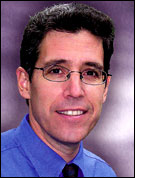Nov 01, 2004Small, wirelessly networked sensors not only monitor vibrations in machines to detect possible problems before they become serious, but the sensors themselves are powered by the very vibrations they are monitoring. It sounds like science fiction, but it's not. BP is testing this technology on one of its oceangoing tankers, the 885-foot Loch Rannoch.
BP has taken a forward-thinking approach to RFID and sensor network technology. The company's Castrol division is working on tagging bottles of motor oil shipped to Wal-Mart even though it's not among the retailer's top 100 suppliers and is not required to start tagging pallets and cases beginning in January 2005. BP is also using GPS, combined with sensors, to monitor not just the location of railcars but also their condition. For instance, if a railcar is severely jolted, a sensor would detect that and an alert would be routed to a maintenance person who could investigate.
These and other innovative projects at BP are the subject of this week's Featured Story on the Web site and the cover story of the October issue of RFID Journal magazine (see BP Eyes New Opportunities). They are not bleeding edge deployments of unproven technology. BP has a disciplined approach to choosing projects that will deliver a return on investment. The methodology is based on the deal flow analysis used by venture capitalists. Each pilot is carefully evaluated before any decision is made to deploy the sensors.
One proposal involves using sensors in BP’s own complex supply chain to track its oil, gas and chemical products as they move from extraction to refining to sale at a retail outlet. It could also help the company track food, equipment and supplies that are shipped to BP oil rigs around the world.
BP is also testing the ability of sensor networks to monitor assets throughout their lifecycle. Sensors can detect slight increases in vibrations, which could indicate that a motor needs maintenance. This can help prevent equipment failure and enable the company to develop more efficient maintenance schedules.
And BP is exploring the use of sensors to improve the security and safety of employees. One pilot examined the feasibility of putting active tags on personnel within an industrial facility. The goal was to see if the tags would enable the company to locate and evacuate employees in the event of an emergency. The project was successful, but BP decided the technology was too expensive to deploy today.
BP has some 50 project proposals at various stages. Some proposals will never make it to the pilot stage, because the technology isn't mature enough or there is no ROI. Some pilots will never make it to full-scale rollouts. The point, as Phiroz Darukhanavala, BP's chief technology officer, says, is to explore the potential benefits of the technology and "position BP to take full advantage of this emerging capability."
This is real leadership. It's always easy to wait for other companies to prove the value of a new technology before deploying. But it's companies whose management understands that you've got to see where technology is going and stake out the benefits first that will gain the most from new technologies. Not because technology provides a long-term competitive advantage, but because those companies embrace change instead of the status quo.
Mark Roberti is the founder and editor of RFID Journal. If you would like to comment on this article, click on the link below.


